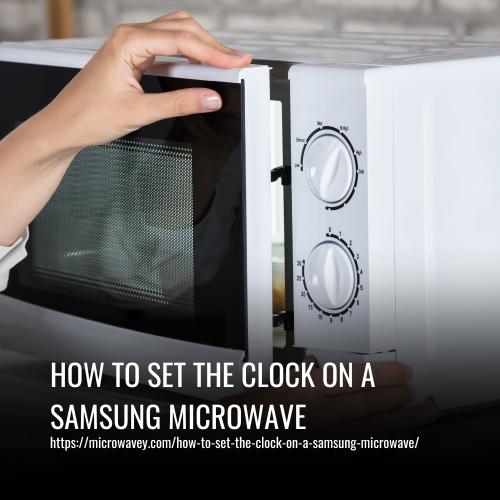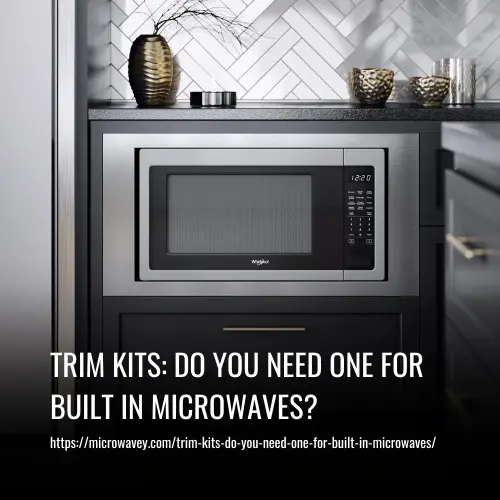Microwaves typically use between 500 and 1800 watts of power while being used, though they can use a higher wattage. Smaller microwaves use fewer watts because they require less power to function, while large microwaves use more watts. The more watts a microwave uses, the faster food gets heated.

Energy Consumption of Countertop Microwaves
1. Below 1,000 Watts
Countertop microwaves are categorized as small if they are less than or equal to 1 cubic foot in size. However, most microwaves use about 1000 watts of power.
Microwaves that are .6 cubic feet in size are the smallest and least energy-consuming type of microwaves, as they use around 600 watts. However, the more common type of small microwaves are .7 cubic feet in size. Microwaves of this size typically use around 700 watts.
Some microwaves are .9 cubic feet in size. Microwaves of this size typically use 900 watts of power. However, they can use between 800 watts and 1100 watts or more.
2. Medium-Sized Microwaves
Medium-sized microwaves are typically 1.1 cubic feet in size. They can use between 800 watts and 2100 watts, though they typically use between 1000 and 1500 watts.
3. Large Microwaves
Large microwaves are equal to or greater than 2 cubic feet in size. Microwaves of this size typically use more than 1500 watts of power every time they are used, but the exact amount of power they use will vary depending on the size and the choices of the manufacturer.
Energy Consumption of Over-the-Range Microwaves
The typical range of microwaves spans from .7 cubic feet to 2 cubic feet.
1. Small Sizes
The most typical small size of microwaves that are installed over the stove seems to be about .9 cubic feet in size, which is similar to the average size of small countertop microwaves. Small over-the-range microwaves tend to use between 500 and 800 watts of power.
2. Standard Size
The standard size of over-the-range microwaves is about 30 inches wide and about 1.5-1.7 cubic feet. It seems that for this range the typical energy consumption is about 1000 watts. However, they can use up to about 1550 watts.
3. Larger Sizes
It seems that any over-the-range microwaves that are larger than 1.8 cubic feet are a little less common. However, some large over-the-range microwaves are 2 cubic feet in size. Large over-the-range microwaves typically use between 1000 and 2000 watts.
General Information
In general, the more power your microwave uses, the faster your food will cook. If you cook a lot of large plates or bowls of food, you will want a microwave with a lot of power. However, if you typically microwave small or medium-sized plates or bowls of food, you will be able to easily use a microwave that uses less power.
Typically, average-sized microwaves use between 900 and 1500 watts of power.
Typically, you don’t need a microwave that has 2000 watts. That is unless you want all of your food to be hot immediately after microwaving. However, most people are okay with waiting for a few minutes for their food to finish warming up all the way. In fact, I have found that I like mixing up my food before it is done warming up, as mixing it allows it to be heated more evenly. Plus, it lets me keep track of how warm my food is. After all, you likely want to keep your food from exploding. If your food gets too hot in the microwave, it can explode, leaving a mess that you will have to clean up in the future.
How to Adjust Microwave Power Consumption

The amount of power that your microwave uses can almost always be found on the box it comes in or in the user’s manual. However, how much power your microwave uses at a time can be changed. Let’s look at how to do so.
How to Change Microwave Power Consumption
- Press cook time
- Set cook time
- Press the “Power level” button on the microwave
- Push the power level you want to use. Keep in mind that 1=100%. 5=50%.
- Put your food in the microwave
- Press “Start”
- When the microwave finishes heating up your food, open the door and take your food out.
What you will need to do to change the amount of power that your microwave is using may vary depending on your microwave. Luckily, if these steps don’t work for your microwave, you can simply find what you need to do in the owner’s manual or care guide.
If you have thrown it away because you thought that you wouldn’t need it, you may be able to find your microwave’s owner’s manual or care guide online.
Average Cost to Run a Microwave
Typically, it will cost between 15 and 44 cents per hour for you to run your microwave. The more wattage your microwave uses, the more it will cost to use it. Exactly how much it will cost to use your microwave will also vary depending on the rates of your power supplier.
This means that it does not cost that much for you to use your microwave. This is great news, especially since your microwave is almost always plugged in, especially if you have an over-the-range microwave rather than a countertop microwave.
FAQs
The wattage of the microwave and the length of time it is used can significantly impact energy consumption. Additionally, the size and type of food being heated can also affect energy usage.
Generally, yes. Newer models of microwaves are designed to be more energy-efficient, using less power to achieve the same cooking results. Look for the ENERGY STAR label when shopping for a new microwave.
Yes. Using the microwave’s power settings, such as the low or defrost setting, can help reduce energy consumption. Additionally, covering food with a lid or microwave-safe cover while cooking can help retain heat and reduce overall cooking time.
Defrosting food in the microwave can actually save energy compared to traditional methods, as it is a quicker and more efficient way to thaw food.
While it’s not necessary to unplug the microwave after each use, unplugging it when it will not be used for an extended period can help reduce standby power consumption.
In most cases, using the microwave is more energy-efficient than the stove, as it uses less power and cooks food more quickly.
Conclusion
Overall, microwaves typically use between 500 and 1800 watts of power. Luckily, microwaves don’t cost all that much to power, even though they are used multiple times every day by most people in most households. If you want to get a new microwave, you will easily be able to find one with a suitable amount of wattage, especially because many microwaves, especially mid-sized microwaves, use about 1000 watts, which is a suitable amount of power to heat up your food quickly.
No matter how much power your microwave has, it will eventually heat up your food to the point where you can enjoy a hot meal, even if your food was frozen when you put it in the microwave.


